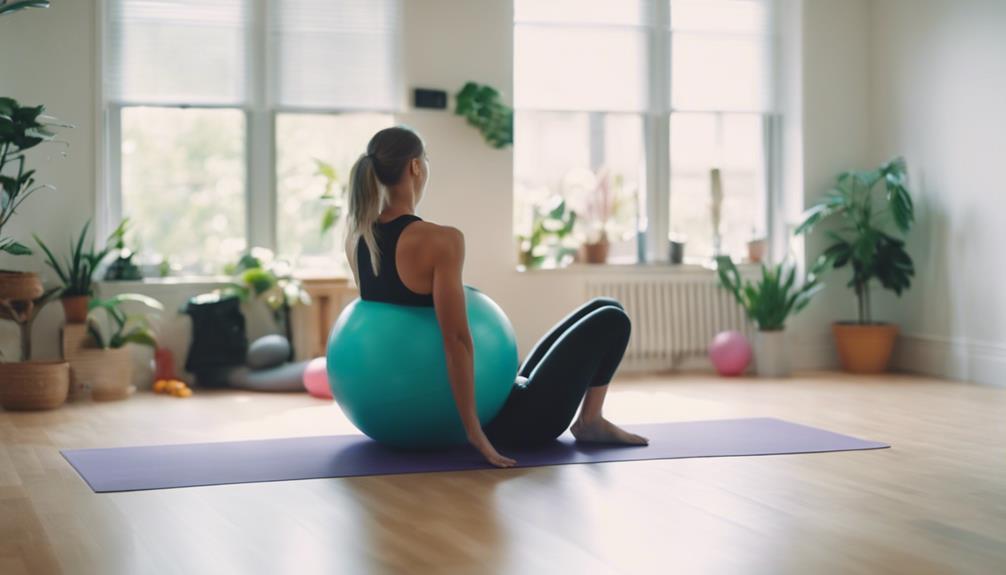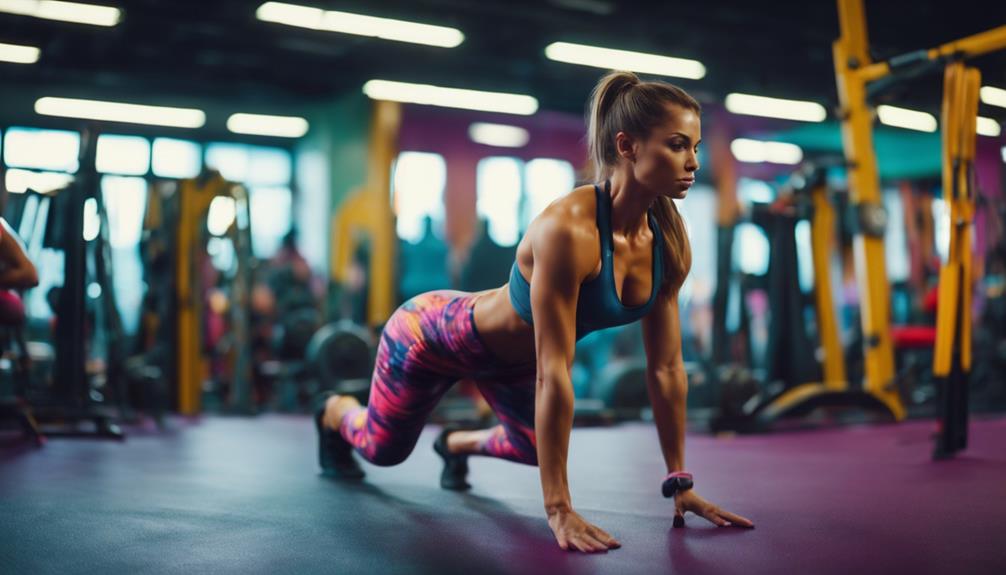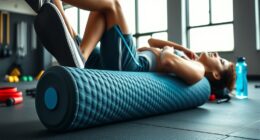You can burn calories and reach your fitness goals with the Eat Hard Work Hard regimen! Begin by adhering to a structured 4-day eating cycle which involves Peak, Hold, and Light days. Make sure to incorporate high protein intake, aiming for approximately 280g daily to maintain muscle mass. Combine this with weight training and high-intensity interval training, aiming for almost five workouts per week. Remember to optimize your meal frequency by consuming 5 to 7 smaller meals daily for consistent energy. Stay tuned for further tips on personalizing your regimen for optimal results!
Key Takeaways
- Follow a 4-day eating cycle of Peak, Hold, and Light days to optimize fat-burning and muscle preservation.
- Incorporate 5 to 7 meals daily, focusing on high-protein sources to enhance metabolism and support muscle recovery.
- Engage in nearly five days of weight training, utilizing Heavy and Light Complex workouts for balanced muscle development.
- Include High-Intensity Interval Training (HIIT) sessions for efficient calorie burning and fat loss while preserving muscle mass.
Nutritional Strategies for Success
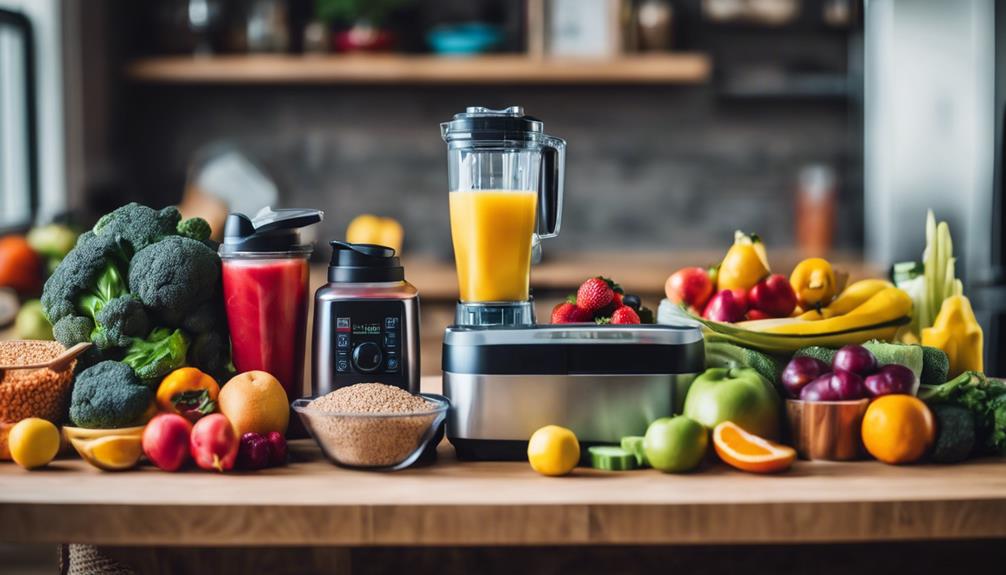
To achieve your fitness goals, implementing a strategic 4-day eating cycle can help optimize both fat-burning and muscle preservation.
Start with a Peak Day, where you'll consume around 2,600 calories, focusing on high-quality protein sources. Aim for approximately 280g of protein, while incorporating enough carbs to keep your energy levels high. This approach allows you to maintain high intensity during workouts, essential for building muscle and burning fat.
On Hold and Light Days, adjust your caloric intake to promote fat loss while still preserving muscle mass. You'll want to eat 5 to 7 smaller meals throughout these days to enhance your fuel and protein intake. This keeps your metabolism revved up and prevents hunger from derailing your efforts.
Don't overlook the importance of hydration; drinking enough water is critical for overall performance.
If you're short on time or cooking space, consider meal substitutes like protein shakes to meet your calorie and macronutrient requirements. By personalizing your intake based on your individual needs, you'll set yourself up for success and see the results you're working hard for!
Optimal Meal Frequency

Maximizing your nutrition isn't just about what you eat, but also how often you eat, with 5 to 7 meals a day being ideal for fuel and protein intake. By spacing your meals every 2-3 hours, you can maintain energy levels and support muscle preservation, particularly during weight loss.
Here's a quick breakdown of meal frequency and protein sources:
| Meal Frequency | Protein Sources | Carbohydrate Sources |
|---|---|---|
| 5 meals | Chicken, lean beef | Whole grains, fruits |
| 6 meals | Fish, eggs | Vegetables, quinoa |
| 7 meals | Low-fat dairy, legumes | Sweet potatoes, oats |
| Custom (based on need) | Protein shakes or bars | Mixed nuts, brown rice |
Consuming protein at each meal, such as fish, lean meats, or low-fat dairy, aids in muscle recovery and growth. Additionally, incorporating healthy carbs guarantees sustained energy throughout the day. Remember, you can adjust meal frequency based on your specific needs, especially if you're a female focusing on particular activity levels and fitness goals.
Weight Training Techniques

When you incorporate effective weight training techniques, you'll not only enhance your strength but also promote balanced muscle development. To achieve this, focus on two main styles: Heavy Complex and Light Complex workouts. Aim for nearly five days of weight training each week, with a typical routine of two days on and one day off.
To maximize your results, consider these key strategies:
- Group your exercises: Organize your workouts into Push, Pull, and Legs to target all major muscle fibers.
- Adopt a progressive approach: Increase weights or repetitions as your strength improves, preventing plateaus.
- Maintain rest intervals: Keep rest time between sets to around 60 seconds for ideal recovery while keeping intensity high.
High-Intensity Interval Training

High-Intensity Interval Training (HIIT) offers a time-efficient way to boost your fitness by alternating intense bursts of exercise with short recovery periods. By pushing yourself to 80-90% of your max heart rate during these intense intervals, you maximize calorie burn in a shorter time frame. This method is particularly effective, as a 20-minute HIIT session can burn as many calories as longer-duration steady-state cardio.
You can incorporate various exercises into your HIIT routine, such as sprints, burpees, and jumping jacks. Typically, you'll perform these exercises in 20-30 second intervals, followed by brief recovery periods. This structure not only elevates your heart rate but also keeps your workouts engaging and challenging.
If you pair HIIT with weightlifting, you'll experience even greater fat loss while preserving muscle mass. Consistently incorporating high-intensity interval training into your regimen can enhance your cardiovascular health and boost your metabolic rate, further improving your overall fat loss results.
Program Structure and Goals
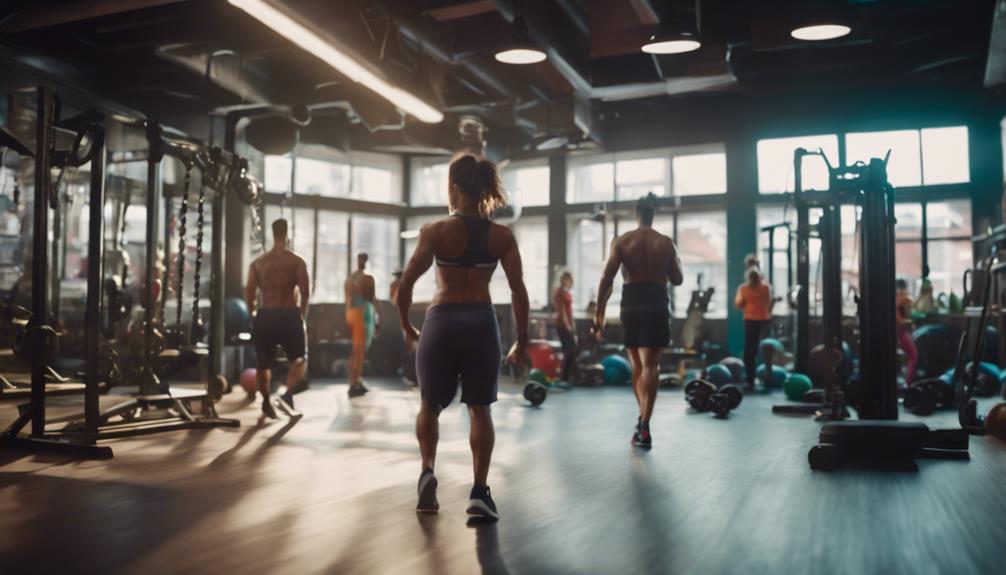
In this program, you'll find clear guidelines for workout frequency, aiming for nearly 5 days a week to keep you on track.
Expect significant weight loss, with many users shedding 25-30 lbs in just 40 days, all while focusing on strategies to preserve muscle.
Let's explore how the structure supports your goals of fat loss and muscle retention effectively.
Workout Frequency Guidelines
To achieve the best results, aim for a workout frequency of 2 days on followed by 1 day off, allowing for almost 5 training days each week. This structure not only helps you stay consistent but also promotes recovery, and you can maintain good form throughout your workouts.
Here's how you can optimize your routine:
- Combine Heavy and Light Complex Training: This mix boosts muscle retention while improving endurance.
- Keep Rest Periods Consistent: Aim for 60 seconds between sets to enhance recovery and performance.
- Be Flexible: Schedule your workout days based on your lifestyle preferences, ensuring you stay committed.
Weight Loss Expectations
Achieving your weight loss goals with this program means understanding its structured approach, which combines both nutrition and exercise to maximize results. Designed for individuals over 250 lbs, the program targets a weight loss of 25-30 lbs in just 40 days.
Your journey includes a 4-day eating cycle of Peak, Hold, and Light days, which tailors caloric intake for effective fat loss while guaranteeing muscle preservation. To complement your diet, nearly 5 days of intense workouts each week, including weightlifting and HIIT, will ramp up your intensity work, enhancing fat-burning and muscle growth.
Here's a quick overview of the program structure:
| Component | Details |
|---|---|
| Eating Cycle | 4-day cycle: Peak, Hold, Light |
| Training Focus | Weightlifting & HIIT |
| Expected Weight Loss | 25-30 lbs in 40 days |
Tracking your progress is essential. By consistently monitoring your weight and body composition, you can adapt the program to fit your needs and guarantee continued effectiveness. Embrace the structure, and you'll be on your way to achieving your weight loss expectations!
Muscle Preservation Strategies
Focusing on muscle preservation is essential as you navigate your weight loss journey, ensuring you shed fat without sacrificing hard-earned muscle mass. To achieve this, you'll want to implement key strategies tailored to your individual needs and goals.
- High-protein intake: Aim for around 280g of protein daily, supporting muscle recovery and retention.
- Structured workouts: Follow a regimen that combines Heavy Complex and Light Complex training styles, hitting nearly five days a week.
- Progressive overload: Gradually increase weights or reps, which builds strength in each muscle group while avoiding training to failure.
Progress Tracking Methods
Tracking your progress effectively can make a significant difference in maintaining motivation and achieving your weight loss goals. One of the most effective progress tracking methods is conducting weekly weigh-ins. Regularly checking your weight helps you stay accountable and allows you to observe trends over time.
In addition to weigh-ins, consider measuring your body composition, like body fat percentage, to guarantee you're not just losing weight but also preserving muscle mass. Keeping a journal of your meals and workouts can also enhance your adherence to the program. This way, you can identify what works best for you and make necessary adjustments.
Online calculators can help you estimate your Basal Metabolic Rate (BMR), guiding you in personalizing your caloric intake for best results. Regular check-ins with your progress metrics, whether it's weekly weigh-ins or monthly body measurements, can boost motivation and track your adherence to dietary and training regimens.
Recovery and Stretching

When you finish your workout, don't skip recovery and stretching; they're essential for your performance.
Incorporating effective recovery techniques and cool down exercises can help your muscles relax and reduce soreness.
Importance of Stretching
Stretching is fundamental for enhancing flexibility and reducing muscle tension, making it a significant part of your post-workout recovery routine. By incorporating stretching, you not only improve your performance but also help your muscles recover effectively.
Here are some key benefits of stretching you shouldn't overlook:
- Enhances flexibility, promoting better range of motion.
- Reduces muscle tension, helping you feel more relaxed.
- Aids in injury prevention, particularly when using proper form.
Make certain to include dynamic stretches like cat-cow and butterfly stretches during your workout. These can enhance muscle engagement and prepare your body for the next exercise.
After your workout, engage in cooldown techniques such as downward-facing dog to relax your muscles and reduce soreness.
Always emphasize proper form while stretching to prevent injuries and guarantee that you're maximizing the benefits of your workout.
Integrating a good stretching routine not only aids in recovery but also contributes to your overall fitness journey. So, don't skip this essential step—your body will thank you!
Effective Recovery Techniques
Effective recovery techniques are essential for maximizing your workout gains and ensuring your body heals properly. One important aspect is incorporating stretching throughout the workout, not just afterward. Dynamic stretches like cat-cow can improve flexibility and enhance spinal mobility. Additionally, integrating cool down exercises such as downward facing dog and shoulder rolls helps relax your muscles and promotes recovery post-exercise.
Here's a quick reference table to help you remember effective techniques:
| Technique | Purpose | Example |
|---|---|---|
| Stretching Throughout | Improves flexibility | Cat-Cow |
| Cool Down Exercises | Relaxes muscles | Downward Facing Dog |
| Breathing Techniques | Enhances stretch effectiveness | Deep Breathing |
| Hydration | Supports performance and recovery | Water breaks |
| Postural Correction | Improves core stability | Plank |
Don't underestimate the power of proper breathing techniques during stretching, as they can greatly support relaxation. Remember to stay hydrated throughout your workout, as this is essential for oxygen and CO2 management, aiding in your overall recovery. Prioritizing these techniques will help you bounce back stronger!
Post-Workout Cool Down
A post-workout cool down is crucial for muscle recovery, helping you release tension and improve flexibility right after an intense session. It's your chance to shift from high intensity to a relaxed state, ensuring your body recovers properly. Incorporating effective stretching techniques during this phase can greatly enhance your recovery.
Consider these key cool down exercises:
- Dynamic Stretches: Use movements like cat-cow and butterfly stretches to enhance spinal flexibility and promote relaxation.
- Gradual Heart Rate Reduction: Incorporate downward facing dog and shoulder rolls to help lower your heart rate and prevent muscle stiffness.
- Proper Posture: Maintain good posture during stretches to counteract the effects of sitting and improve your core stability.
Integrating these cool down techniques into your routine won't only benefit your muscles but also enhance your overall workout experience.
Trainer Insights and Tips

Trainers like Janette Jenkins stress the need to modify exercises, ensuring everyone can join in safely and effectively, regardless of their fitness level. Here are some trainer insights to help you maximize your workout:
| Exercise Type | Modification Tips |
|---|---|
| Squats | Use a chair for support if needed. |
| Push-ups | Start on your knees to reduce intensity. |
| Lunges | Hold onto a wall for balance. |
| Planks | Drop to your knees for an easier version. |
| Jumping Jacks | Step side to side instead of jumping. |
Incorporating dynamic stretches throughout your workouts is important for improving flexibility and reducing the risk of injury. It's crucial to listen to your body and adapt your routine as necessary. Engaging with trainers on social media can provide additional tips and motivation, helping you stay accountable to your goals. Remember, progress tracking is essential; monitor your heart rate to assess workout effectiveness. By applying these insights and modifying exercises, you'll create a safer and more productive fitness journey.
Community Support and Engagement

Building a supportive community is essential for staying motivated and engaged on your fitness journey. When you're surrounded by like-minded individuals, you'll find that your commitment to your routine strengthens.
The Hollywood Trainer Club is a fantastic example of how community support can elevate your fitness experience. Here's how it helps:
- Connect and share experiences with fellow members
- Receive insights and tips from experienced trainers like Janette Jenkins and Ashley Joy
- Participate in community challenges that foster camaraderie
Participants often report that the encouragement they receive from this vibrant community greatly boosts their motivation and adherence to their routines.
The regular feedback shared within the group helps tailor the program to meet diverse needs, ensuring everyone feels included. With the power of community support, you're not just working out alone; you're part of a dynamic network that celebrates each other's successes.
Embrace the motivation that comes from being engaged in a community. Together, you'll blast calories and achieve your fitness goals, making the journey not only rewarding but also fun!
Personalization and Adaptation

Personalization and adaptation are fundamental to creating a fitness routine that truly works for you, ensuring that your diet and workouts align with your unique goals and lifestyle.
To start, tailor your caloric intake with a 4-day eating cycle. You might have a peak day at 2,600 calories and lighter days at 2,000 calories to meet your energy and weight loss needs.
Aim for 5 to 7 meals per day to maximize protein intake and keep your metabolism firing. It's important to adjust your macronutrient ratios based on your body type and activity level, emphasizing a high protein intake of around 280g to help preserve muscle mass while losing weight.
Flexibility in your workout and dietary plans is significant. You want to accommodate your personal schedule and preferences, which helps you stick to your routine.
Regularly assess your progress, focusing on body composition and adherence to your diet. This continuous evaluation allows for effective adaptation of your program, ensuring you stay on track with your evolving fitness goals.
Frequently Asked Questions
Is It Possible to Burn 1000 Calories in a Workout?
Yes, you can burn 1,000 calories in a workout, especially with high-intensity training and longer sessions. Focus on combining cardio and strength exercises to maximize calorie burn while considering your individual fitness level and metabolism.
Is Burning 1000 Calories a Day Too Much?
Burning 1000 calories daily might be too much for you if your caloric needs aren't high. It's crucial to balance exercise intensity, rest, and nutrition to avoid burnout or injury while achieving your fitness goals.
Is It Possible to Burn 700 Calories a Day?
Yes, you can burn 700 calories a day. By combining high-intensity workouts, strength training, and sustained cardio, you'll effectively reach that target. Just make certain you're staying consistent and pushing yourself during your sessions.
What Is the 600 Calories in 60 Minutes Challenge?
The 600 Calories in 60 Minutes Challenge is an intense workout combining cardio and strength exercises. You'll engage multiple muscle groups, enhance fitness levels, and burn calories while ensuring proper form and effective warm-ups and cool-downs.
Can the “Eat Hard Work Hard” Routine Help Achieve a Bikini Model Butt?
Looking to achieve a bikini model butt? Incorporating the “Eat Hard Work Hard” routine along with the top 5 butt exercises can certainly help. Regularly engaging in exercises like squats, lunges, hip thrusts, deadlifts, and glute bridges can take your booty to the next level. Try it out and see the results!
Conclusion
To truly blast calories and achieve your fitness goals, you need to embrace a holistic approach that combines smart nutrition, effective training, and proper recovery.
Imagine a busy professional named Sarah who, by following a structured meal plan and incorporating HIIT workouts into her routine, lost 20 pounds in three months.
With community support and personalized adjustments, she not only transformed her body but also boosted her energy levels.
Commit to the journey, and you'll see incredible results!





